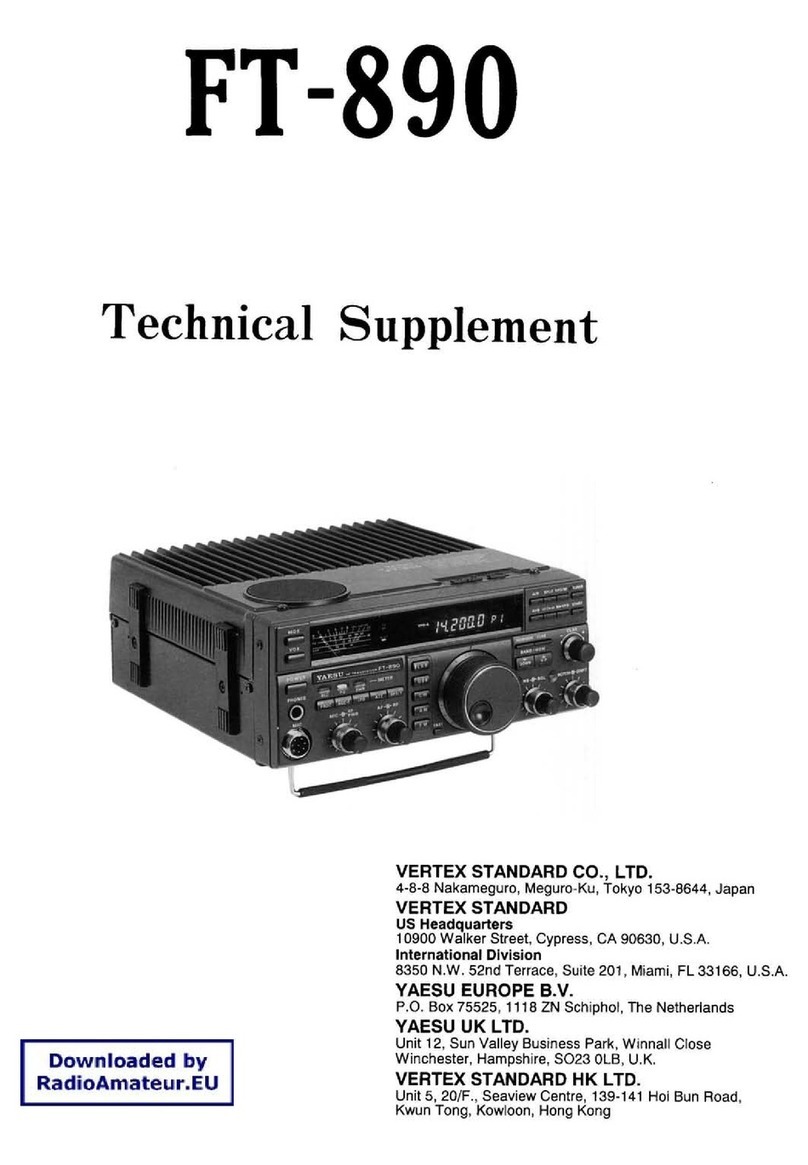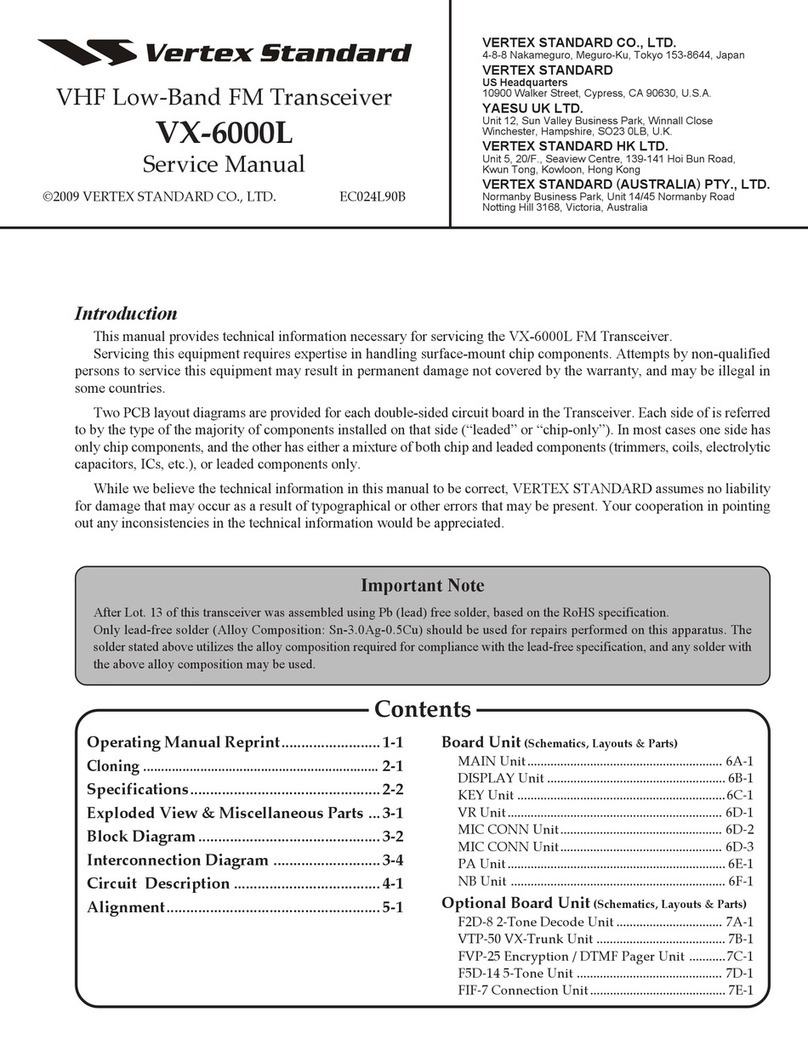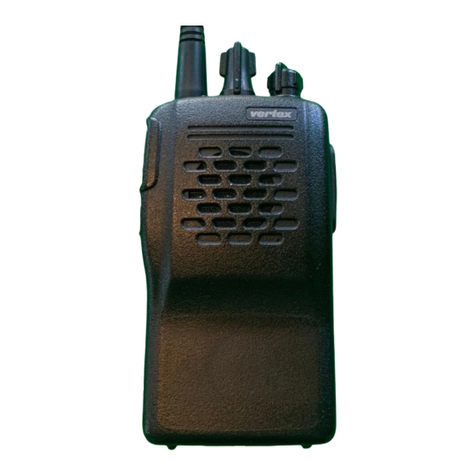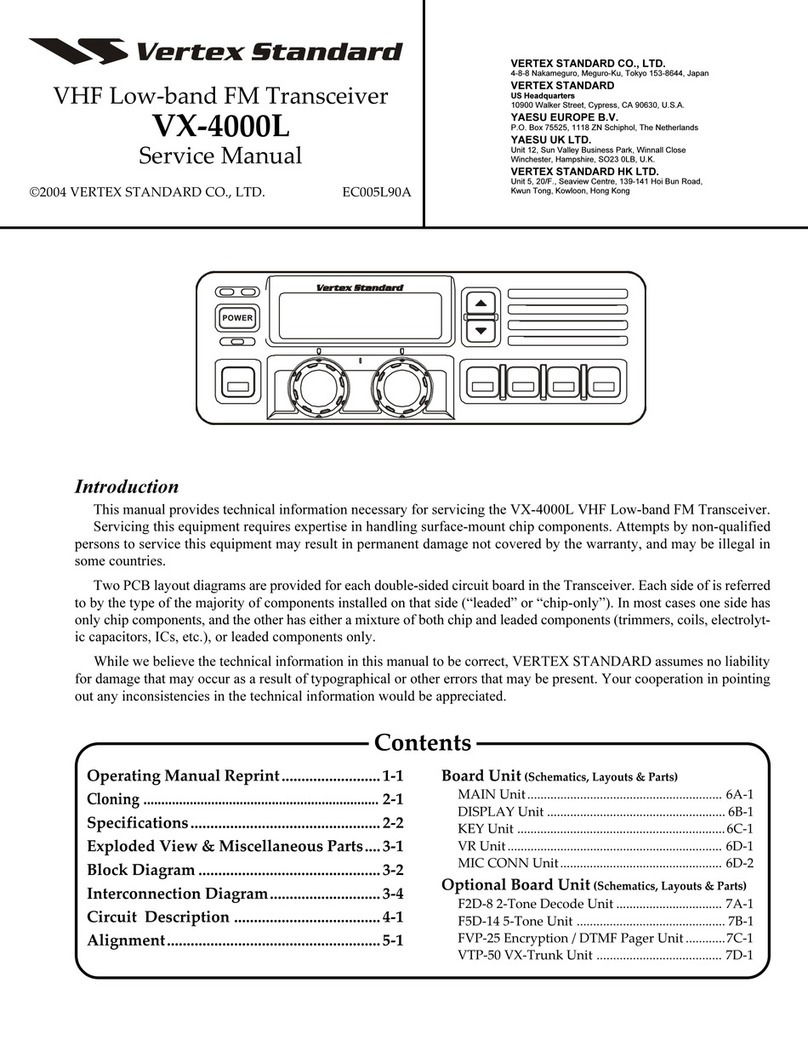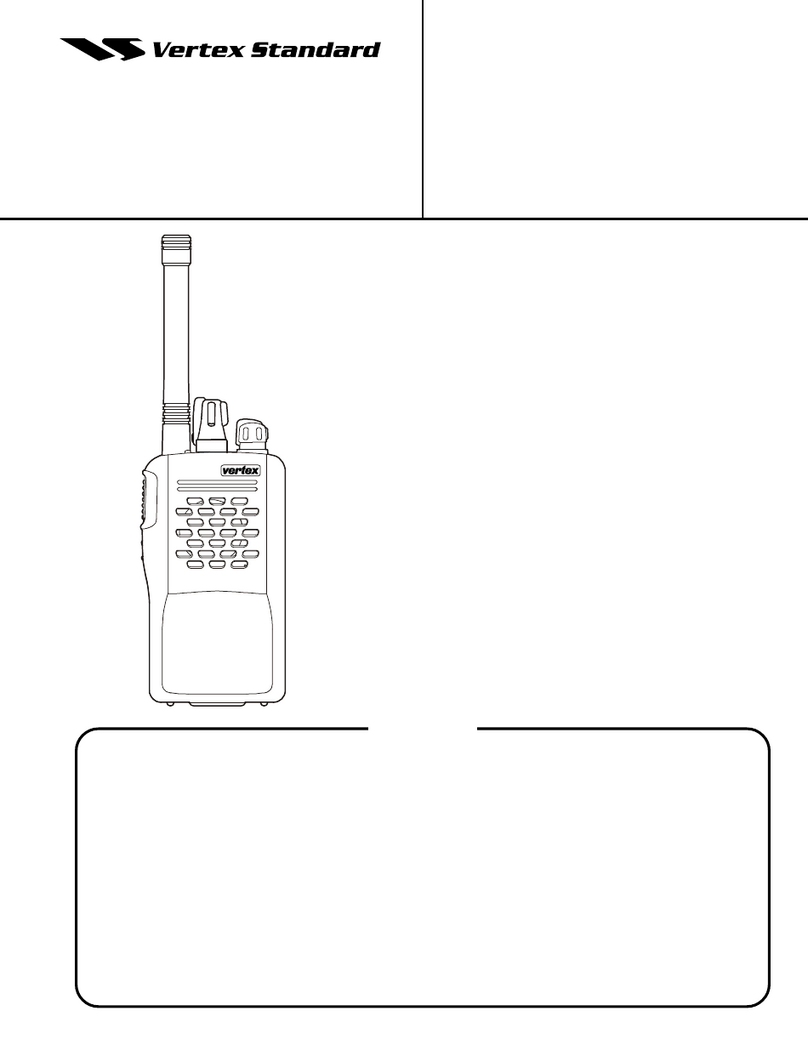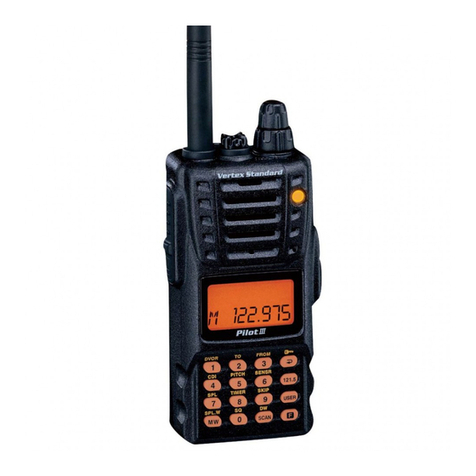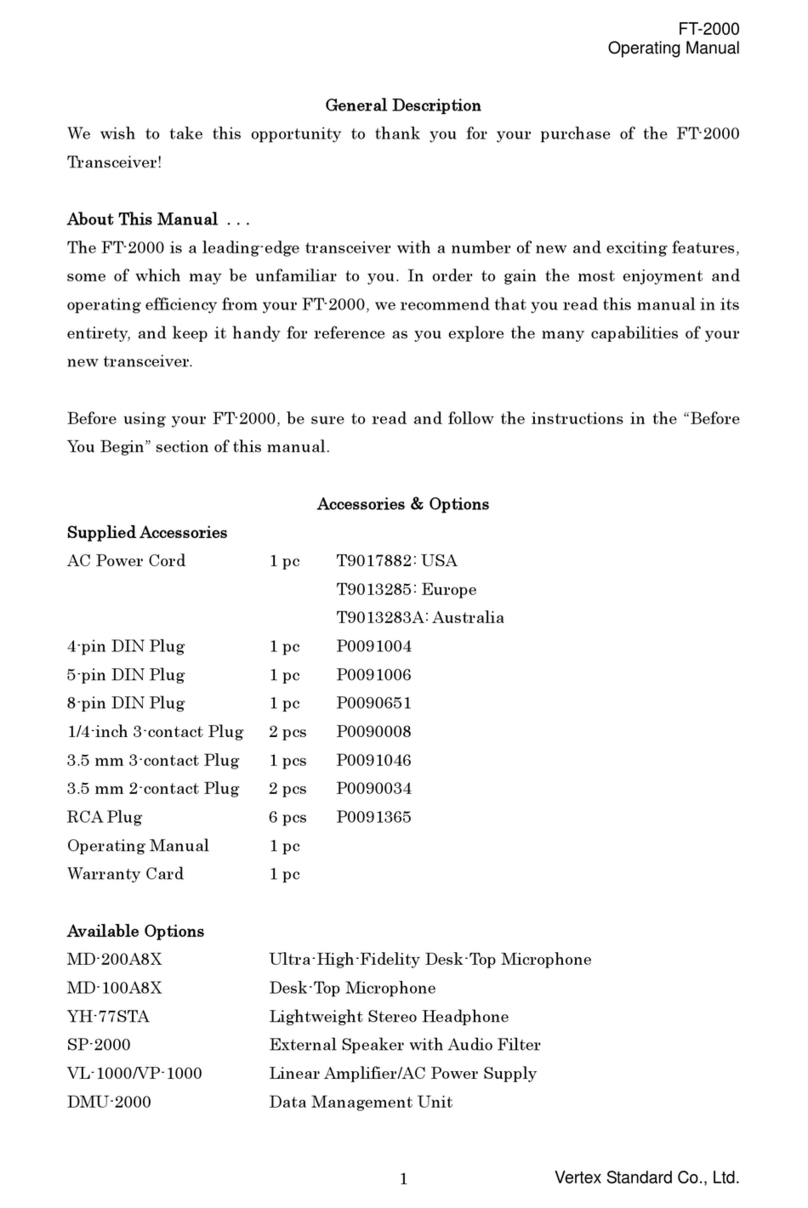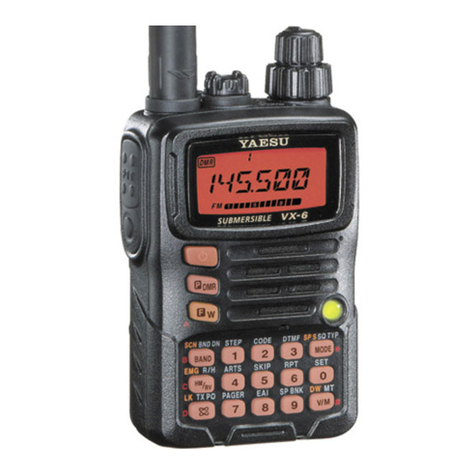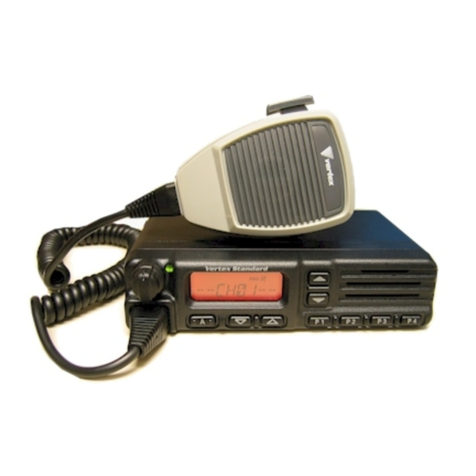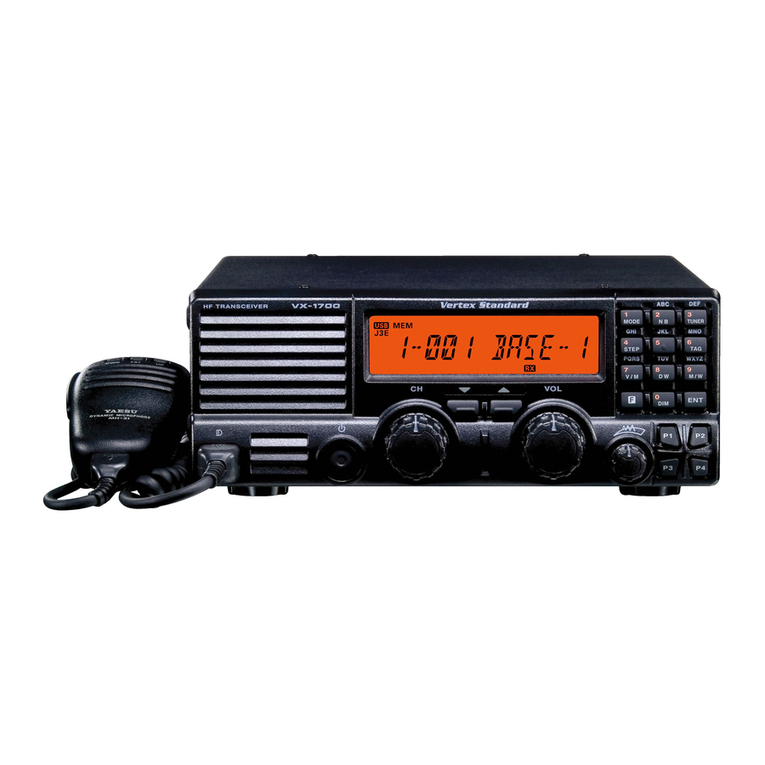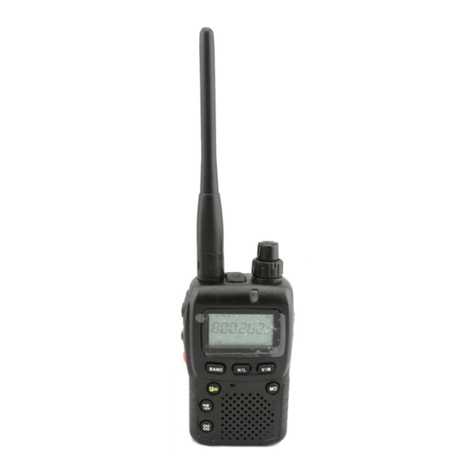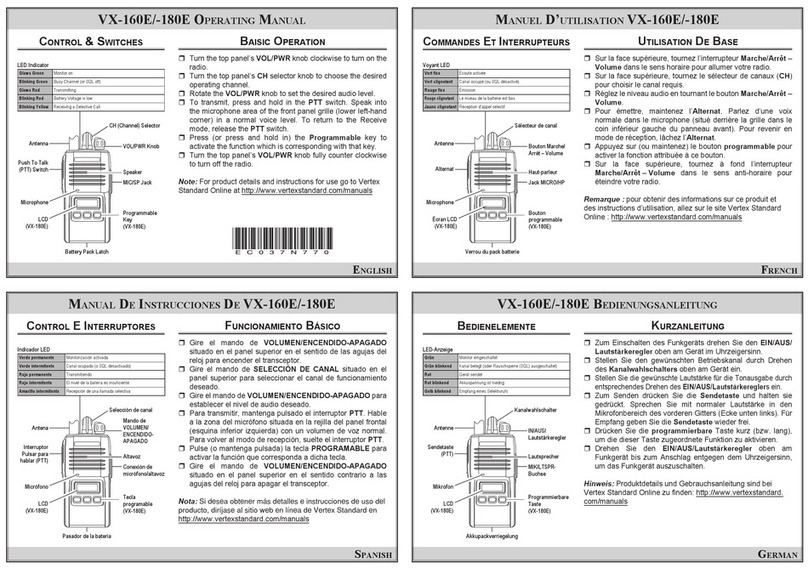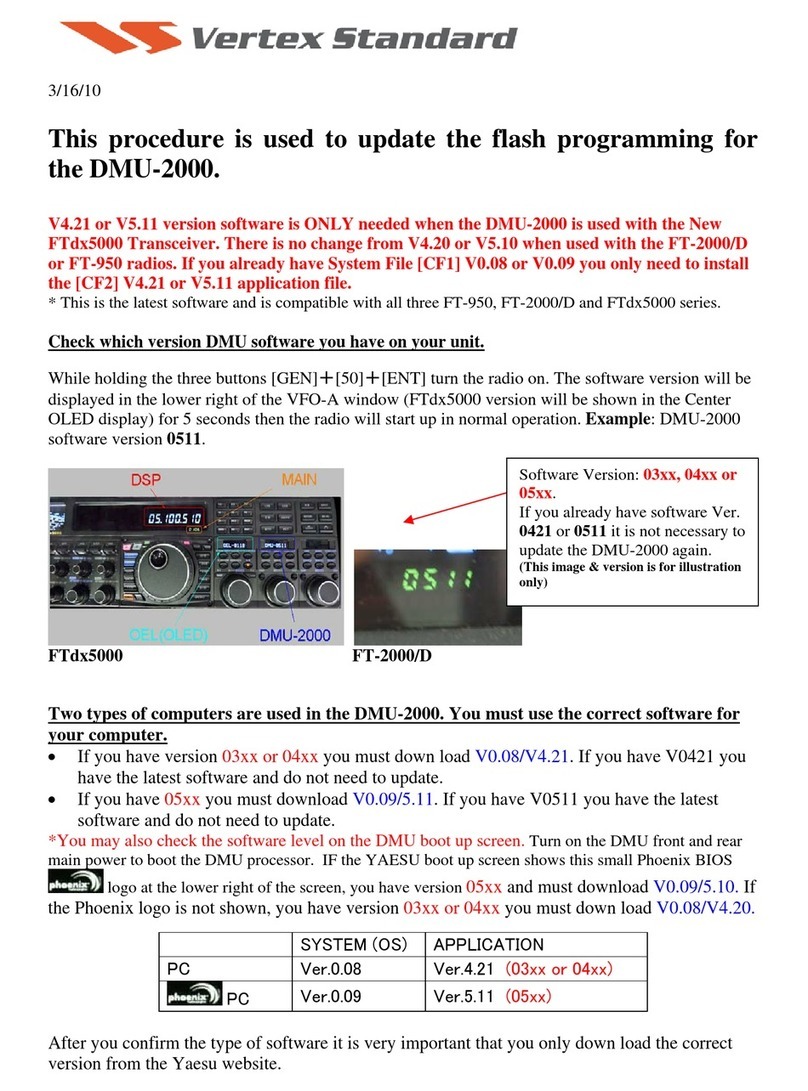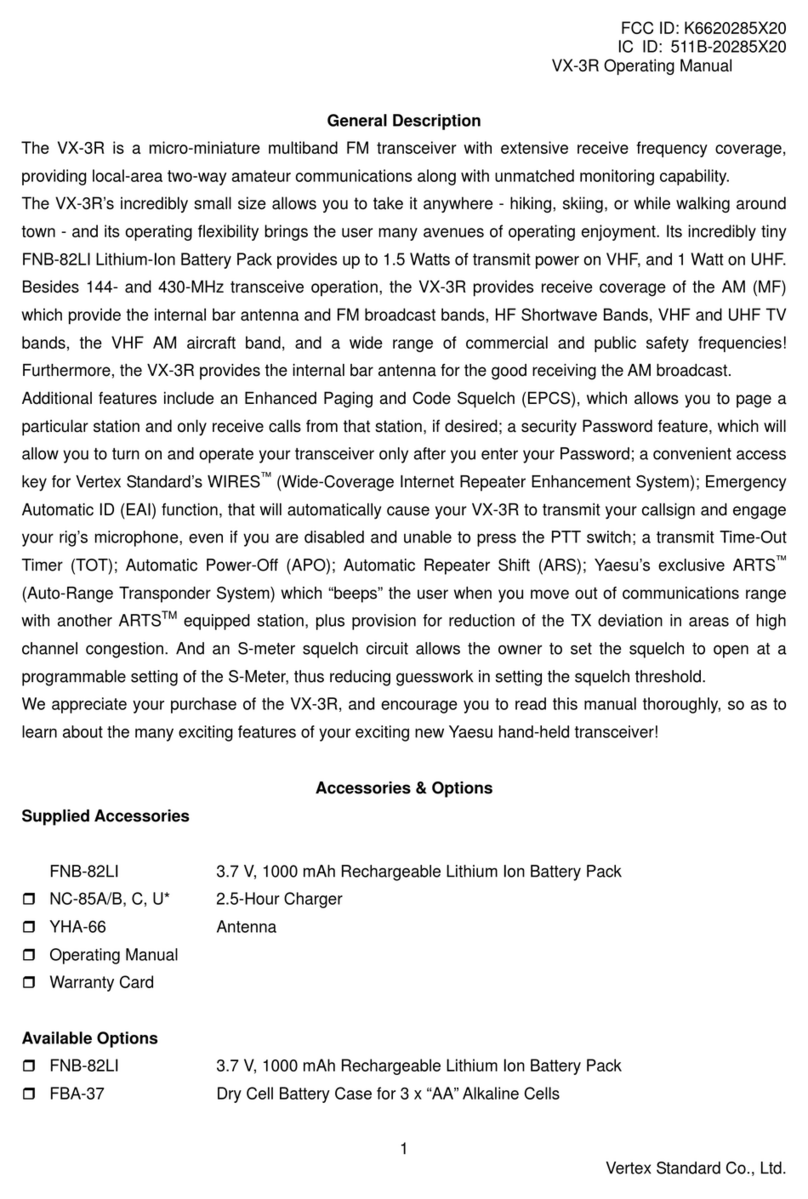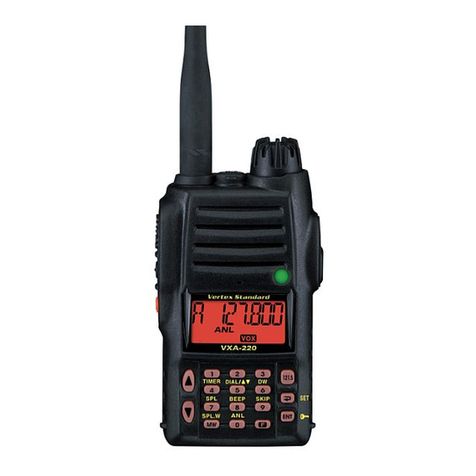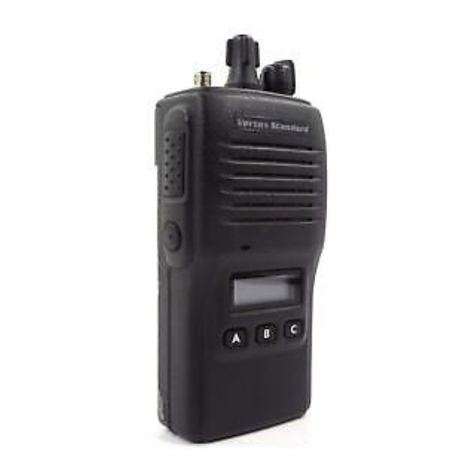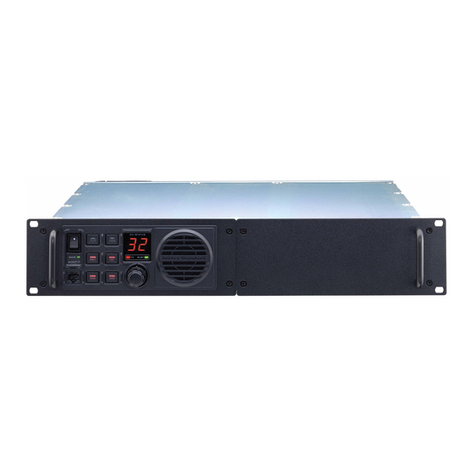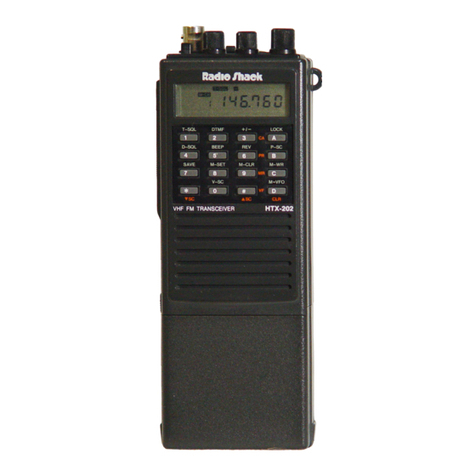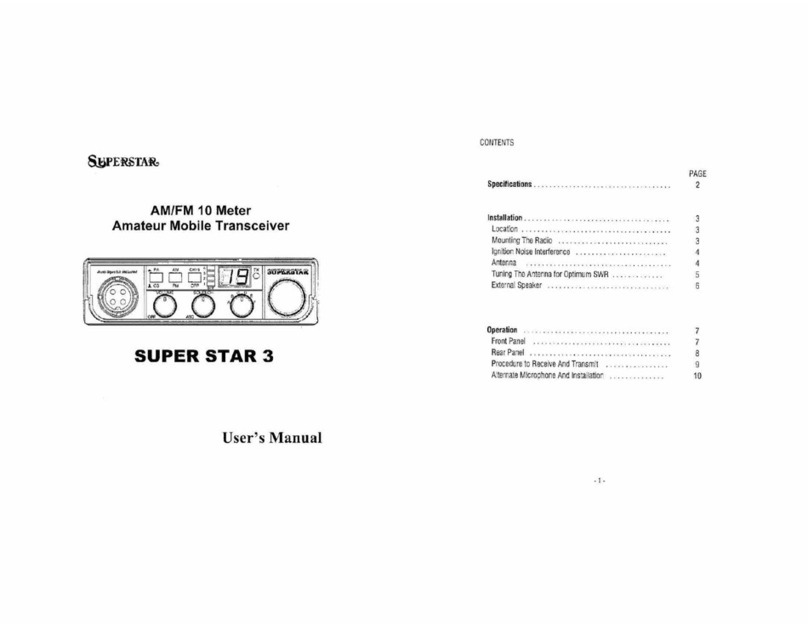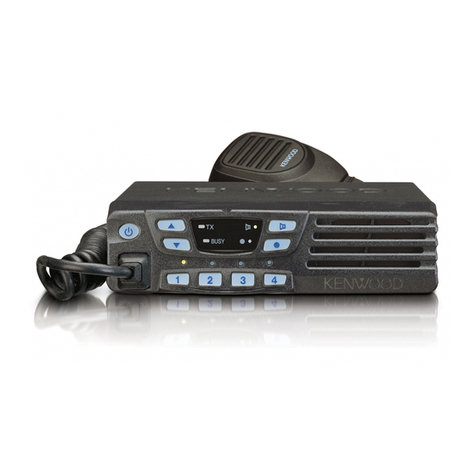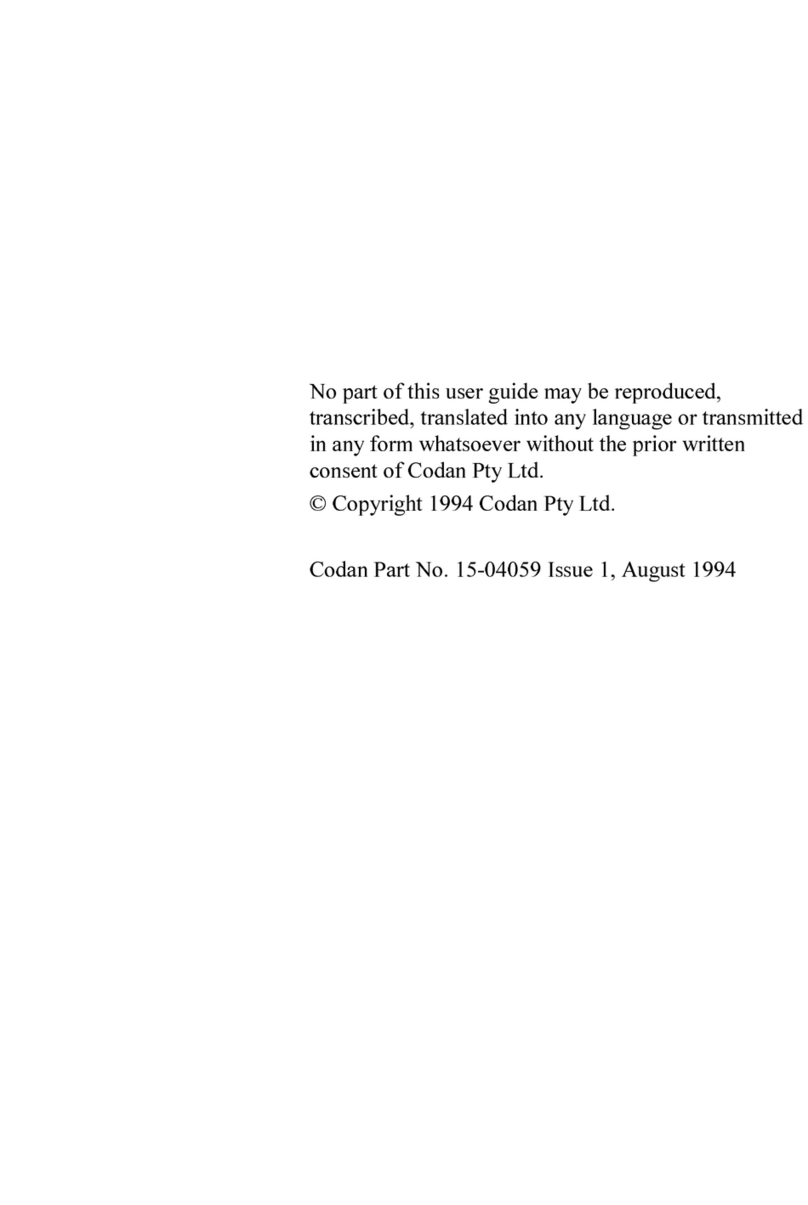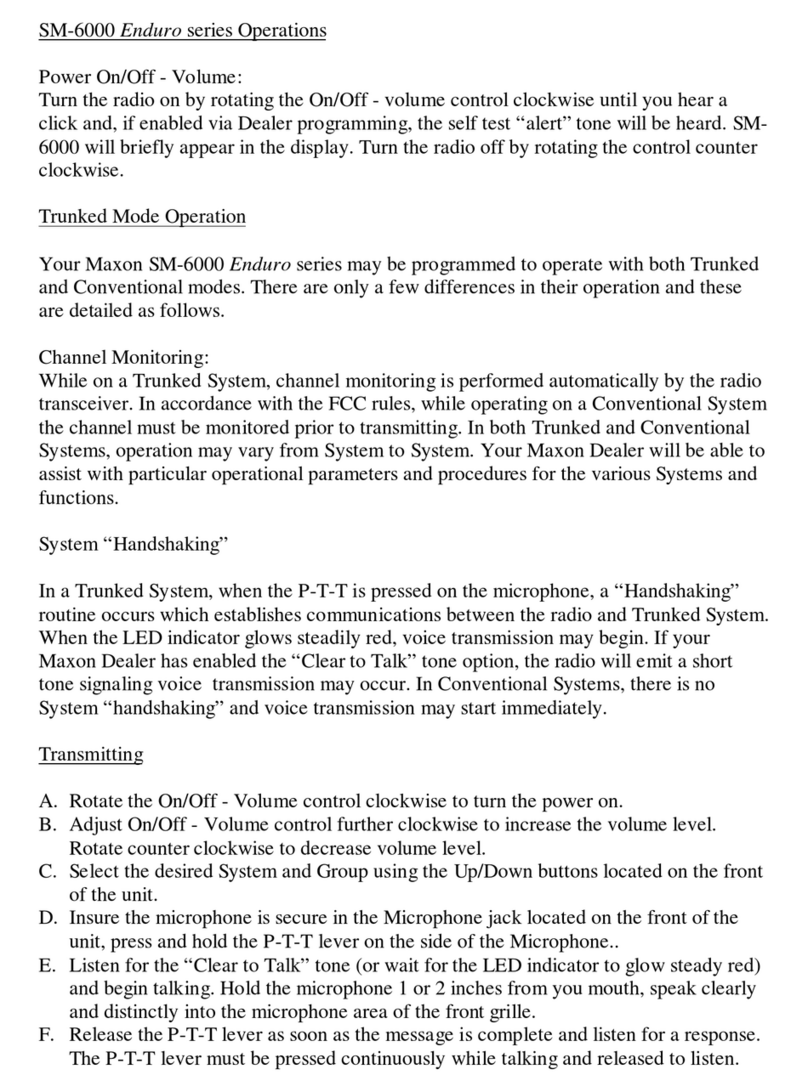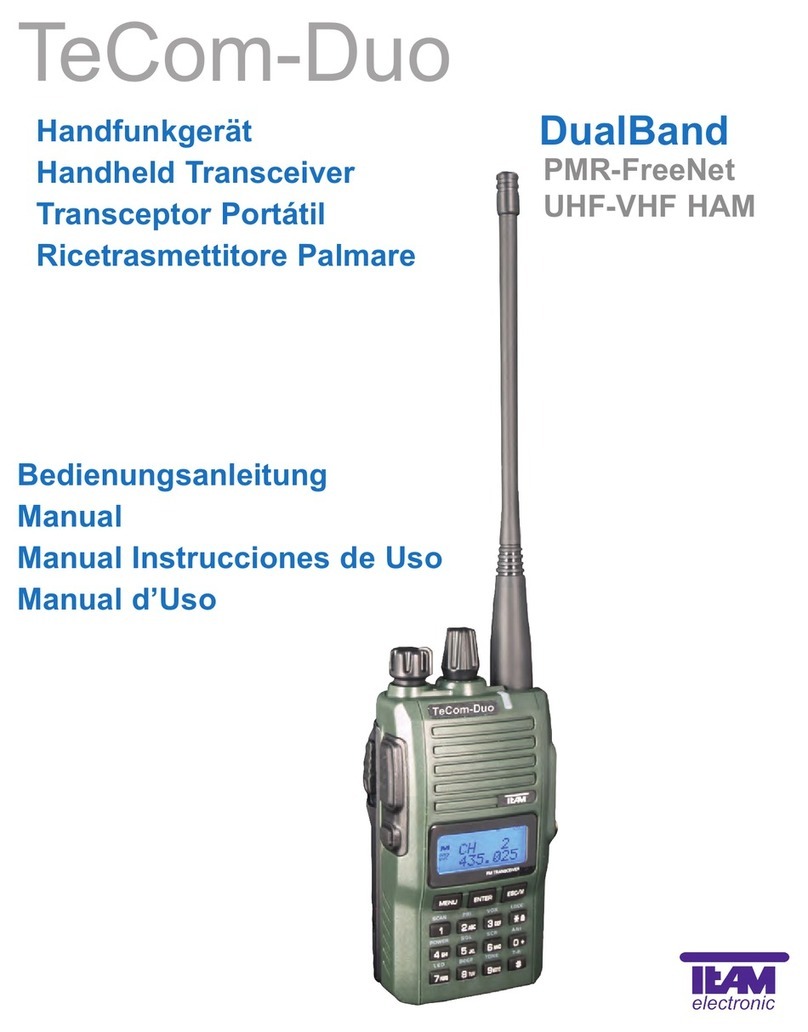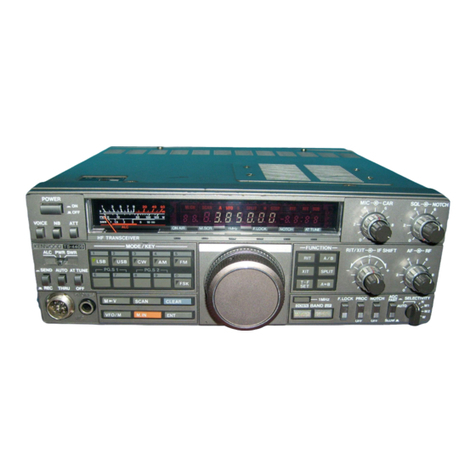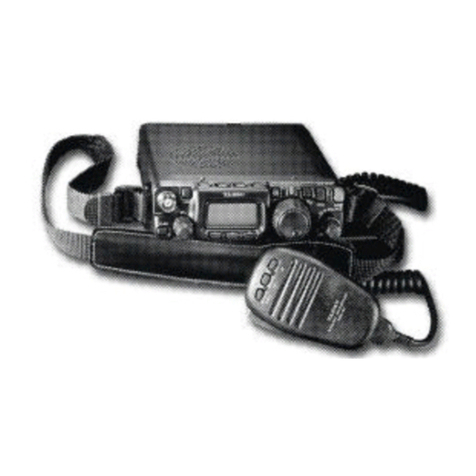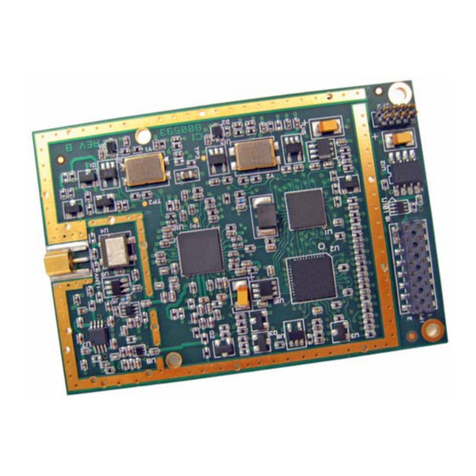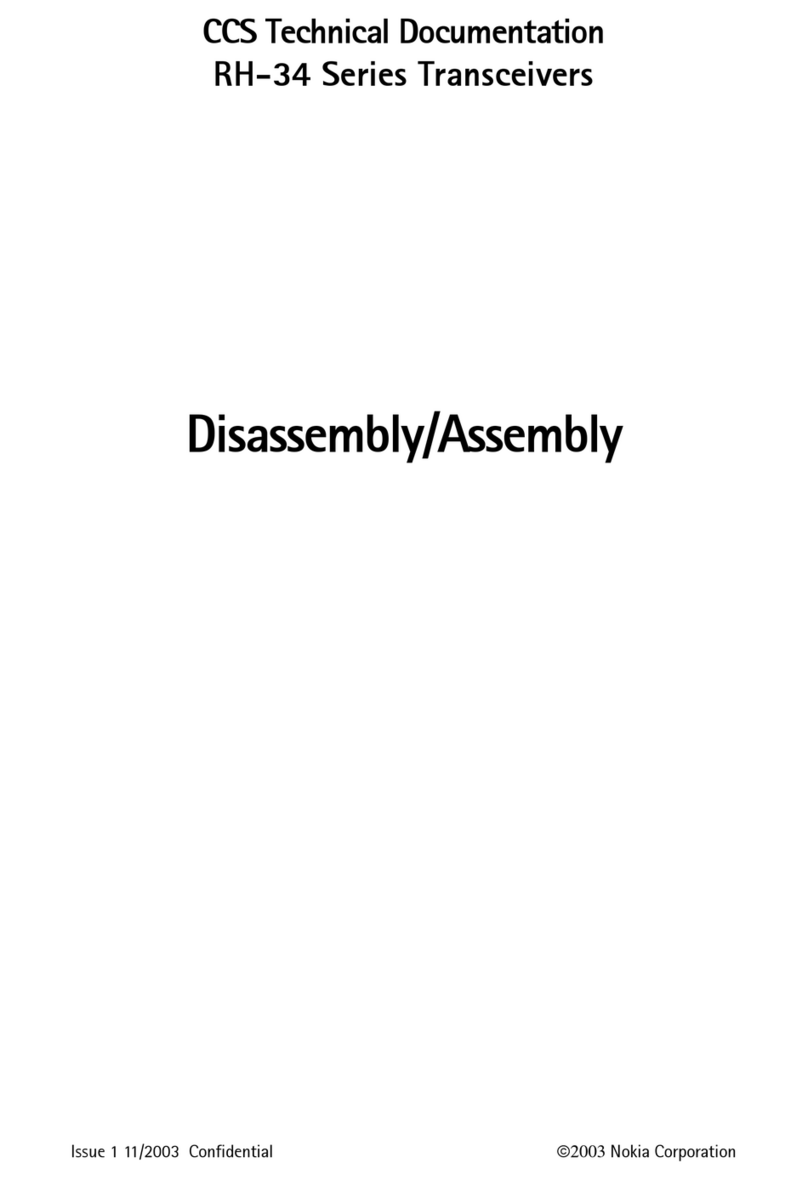
7
Circuit Description
Receive Signal Path
Incoming RF from the antenna jack is passed through a
low-pass filter and high-pass filter consisting of coils
L1022, L1025, L1026, L1027, L1028, & L1029, capacitors
C1271, C1276, C1277, C1278, C1280, C1281, C1282, C1283,
C1285, C1286, C1289, C1290, C1293, C1294, & C1295 and
antenna switching diodes D1039 and D1042 (both
RLS135) to the receiver front end section.
Signals within the frequency range of the transceiver is
applied to the receiver front end which contains RF am-
plifier Q1076 (2SC5555ZD) and varactor-tuned band-pass
filter consisting of coils L1014, L1017, L1018, L1019, L1023,
L1024, & L1031, capacitors C1241, C1243, C1245, C1246,
C1248, C1250, C1255, C1256, C1259, C1266, C1272, &
C1273, and diodes D1034, D1035, D1038, & D1041 (all
HVC350B), then applied to the 1st mixer Q1068
(2SC5555ZD).
Buffered output from the VCO is amplified by Q1049
(2SC5555ZD) to provide a pure 1st local signal between
143.4 and 172.4 MHz for injection to the 1st mixer. The
35.4 MHz 1st mixer product then passes through mono-
lithic crystal filter XF1001 (7.5 kHz BW) which strips away
all but the desired signal, which is then amplified by mix-
er post-amp Q1061 (2SC4915Y).
The amplified 1st IF signal is applied to the AM/FM IF
subsystem IC Q1058 (TK10931VT1), which contains the
2nd mixer, 2nd local oscillator, limiter amplifier, noise
amplifier and AM/FM detector.
A 2nd local signal is generated by PLL IC Q1041
(MB15A01PFV1) from the 17.475 MHz crystal X1002.
The17.475MHz signal is doubled by Q1054 (2SC4617) to
produce the 450 kHz 2nd IF when mixed with the 1st IF
signal within Q1058 (TK10931VT1). The 2nd IF then pass-
es through the ceramic filter CF1001 to strip away unwant-
ed mixer products.
In the FM mode, a 2nd IF signal from the ceramic filter
CF1001 applied to the limiter amplifier section of Q1058
(TK10931VT1), which removes amplitude variations in
the 450 kHz IF before detection of the speech by the ce-
ramic discriminator CD1001. Detected audio from Q1058
(TK10931VT1) is passed through the de-emphasis, con-
sisting of the resistors R1144, R1152, R1155, & R1199, ca-
pacitors C1118, C1119, C1124, C1149, & C1151, and Q1037-
2(NJM12904R).
In the AM mode, detected audio from Q1058
(TK10931VT1) is passed through the audio amplifier
Q1037-1 (NJM12904R) and ANL circuit, then applied to
the AF amplifier Q1037-2 (NJM12904R). When impulse
noise received, a portion of the AM detector output sig-
nal from the AM/FM IF subsystem Q1058 (TK10931VT1),
including pulse noise is rectified by D1019 (1SS400). The
resulting DC is applied to the ANL MUTE gate Q1039
(UMG2N), thus reducing the pulse noises.
The processed audio signal from Q1037-1 (NJM12904R)
is passed through the AF mute and amplifier Q1037-2
(NJM12904R) to the audio tone equalizer Q1021
(NJM12904R), Q1018 (HN1J02FU), Q1023 (HN1J02FU),
Q1026 (HN1J02FU), and Q1020 (NJM12904R). The equal-
ized audio signal is passed through the volume control to
the audio power amplifier Q1001 (TDA2822D013TR), pro-
viding up to 0.8 Watts to 16-ohm loudspeaker or audio
power amplifier Q1005 (TDA7233D), providing up to 0.4
Watts to 8-ohm the headphone jack.
A portion of the AF signal from the AM/FM IF subsystem
Q1058 (TK10931VT1) converted into DC voltage within
the IC, and then passes through the AGC amplifier Q1063
(2SA1774) and Q1066 (UMW1) to the inversion amplifi-
ers Q1075 (2SC5555ZD) and Q1062 (2SC5555ZD). These
amplifier reduce the amplifier gain of the IF amplifier
Q1061 (2SC4915Y) and the RF amplifier Q1076
(2SC5555ZD) while receiving a strong signal.
Squelch Control
When signal is received, appear the DC squelch control
voltage at pin 15 of AM/FM IF subsystem Q1058
(TK10931VT1) according to the receiving signal strength.
This DC is applied to pin 16 of microprocessor Q1024
(LC87F74C8A).
The DC squelch control voltage is compared with the SQL
threshold level by the microprocessor Q1024
(LC87F74C8A). If the DC squelch control voltage is low-
er, pin 7 of Q1024 (LC87F74C8A) goes high. This signal
activates the AF MUTE gate Q1037-2 (NJM12904R), thus
disabling the AF audio.
Also, the microprocessor stops scanning, if active, and
allows audio to pass through the AF MUTE gate Q1037-2
(NJM12904R).




















